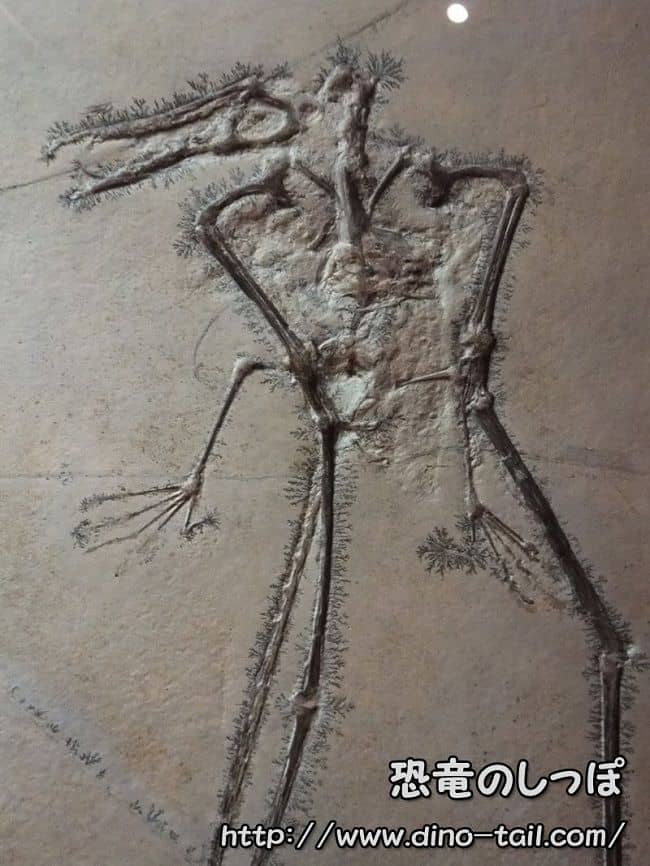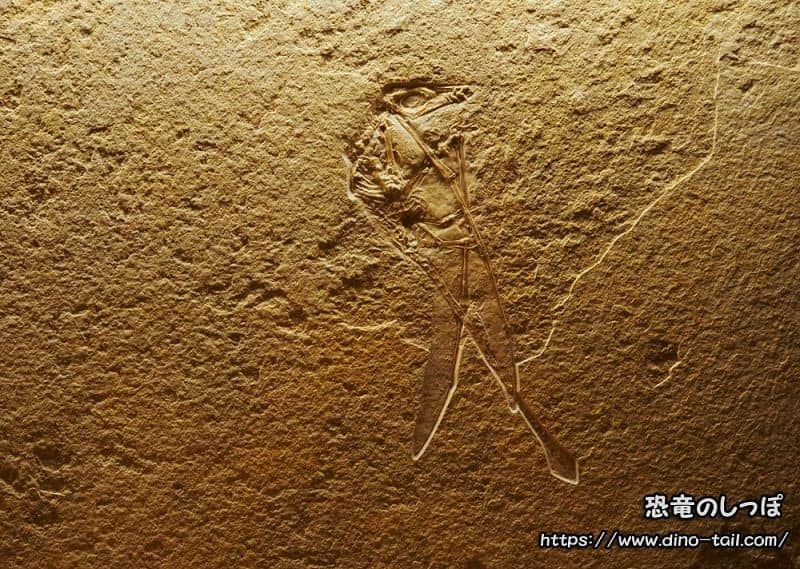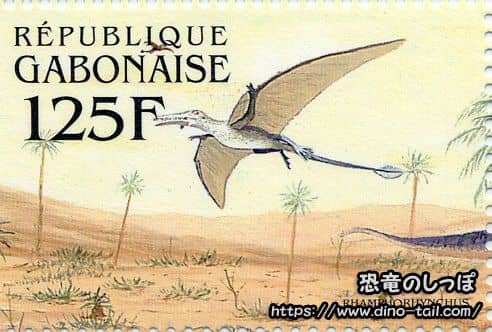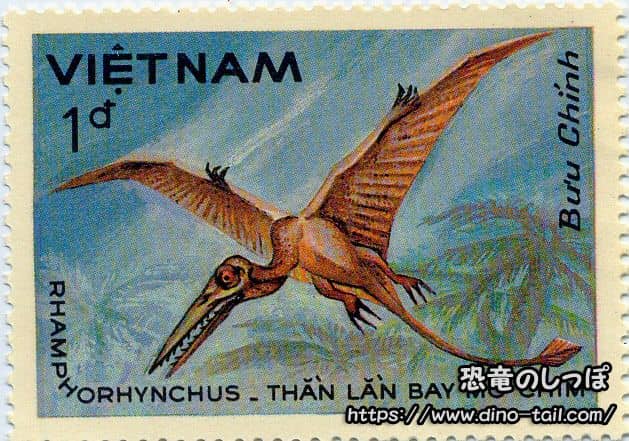About Rhamphorhynchus (Pterosaur)
| Scientific Name (Genus) | Rhamphorhynchus |
| Meaning of Name |
Beak snout
rhamphos (beak) [Greek] - rhynchos (snout, nose) [Greek] |
| Classification | Pterosauria, Rhamphorhynchoidea, Rhamphorhynchidae |
| Body Length (Size) | Approx. 1.2m |
| Wingspan | Approx. 1.8m |
| Diet | Piscivorous |
| Period | Late Jurassic |
| Sub-classification / Species Name | Rhamphorhynchus muensteri (Type species) |
| Year of Paper Publication | 1847 |
Features: Hunter of the Jurassic Night Sky
Rhamphorhynchus is a representative pterosaur of the suborder Rhamphorhynchoidea that lived in the coastal areas of Europe during the Late Jurassic (about 150 million to 148.5 million years ago). Its body was equipped with a number of sophisticated features for dominating the sky and sea.
Anatomy and Hunting Method
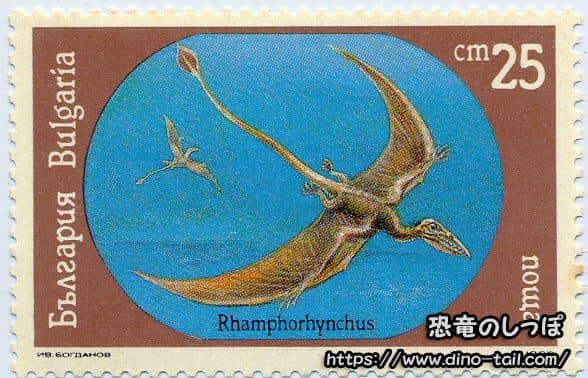
Its long, sharp jaws were lined with needle-like teeth pointing forward, functioning like a "fish trap" to prevent captured fish from escaping. The "skimming theory," which proposed that it flew by gliding over the water surface and scooping up fish with its lower jaw, is now not widely supported due to the structure of its jaw. It probably hunted like modern shearwaters, looking into the water and quickly diving to catch prey when it spotted it.
At the end of its long tail was a diamond-shaped vane that acted as a rudder to maintain stability during flight.
A Fluffy Pterosaur?

Miraculous fossils from Solnhofen have also revealed that the body of Rhamphorhynchus was covered with a hair-like structure for insulation called pycnofibers. This is strong evidence that they were "warm-blooded" animals that maintained their own body temperature, like modern birds and mammals.
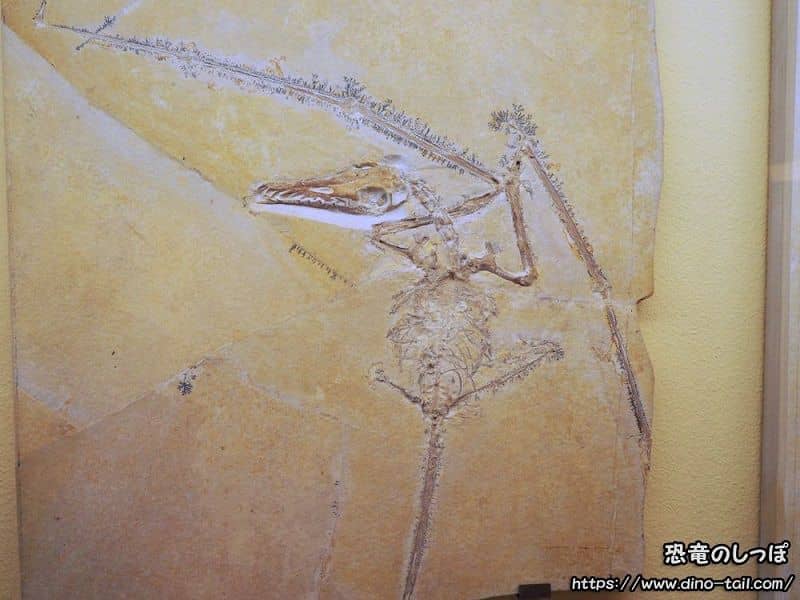
Museum Berger, Germany.
The Growth of Rhamphorhynchus
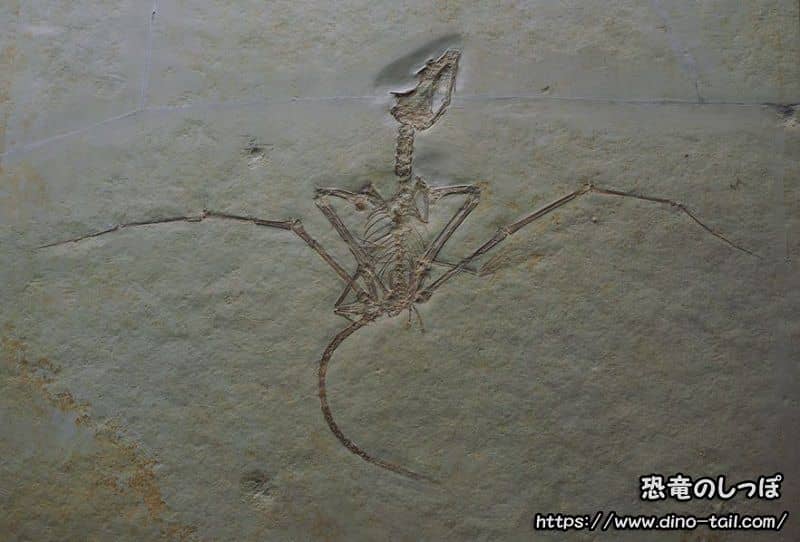
Museum Berger, Germany.
Since it was discovered that fossils once thought to belong to different species were actually different growth stages of the same species, Rhamphorhynchus muensteri, research on how Rhamphorhynchus grew has progressed.
When young, their skulls (beaks) were relatively short, and they had large eyes. As they grew, their beaks became longer. Although the number of teeth did not change, their shape changed to a shorter, thicker image.
The vane at the tip of the tail also changed shape with growth. In juveniles, it was almost oval, but as they grew, it became diamond-shaped (quadrilateral). It is said that in individuals that reached their maximum body length, the tail vane eventually changed to a shape close to a triangle.
They reached their maximum body length in about three years, after which their physical growth slowed down.
Analysis of the sclerotic ring (a ring that functions to adjust the pressure on the eye and the amount of light) suggests that Rhamphorhynchus was probably nocturnal and hunted fish by diving into the water itself.
The Last Supper and a Dramatic End
A very dramatic fossil has been discovered in Solnhofen, Germany, that tells the story of the ecology of Rhamphorhynchus.
It is a trinity of fossils showing a Rhamphorhynchus being impaled through the throat by a large predatory fish, Aspidorhynchus, at the very moment it was about to swallow a fish . Between the wing bones of the Rhamphorhynchus were the bones of the small fish it was about to eat, and impaled in its throat was the spear-like snout of the Aspidorhynchus.
It is likely that the Aspidorhynchus attacked the Rhamphorhynchus from below as it was hunting near the water's surface, and both perished. This is a miraculous fossil that captures a snapshot of the harsh struggle for survival and the food chain in the Jurassic seas.
Rhamphorhynchus Stamp and Fossil Gallery
